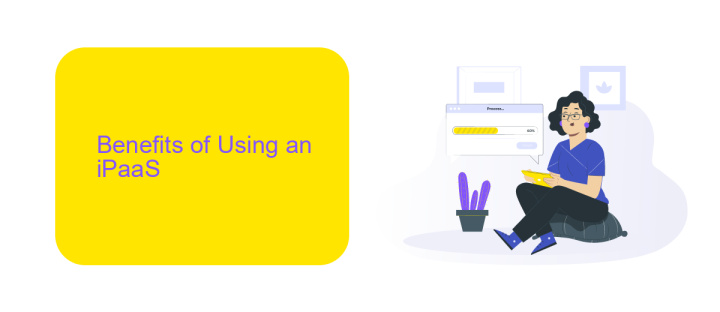iPaaS Components
Integration Platform as a Service (iPaaS) is revolutionizing how businesses connect disparate systems and applications. Essential for seamless data flow, iPaaS components include connectors, data integration tools, API management, and workflow automation. This article delves into these core components, exploring their functions and benefits, and how they collectively enhance operational efficiency and innovation in today's fast-paced digital landscape.
Components of an iPaaS
Integration Platform as a Service (iPaaS) consists of various components that facilitate seamless integration of different applications and data sources. These components work together to ensure efficient data flow and process automation across an organization.
- Connectors: Pre-built connectors allow integration with various applications and services, reducing the need for custom coding.
- API Management: Tools to create, manage, and monitor APIs, ensuring secure and efficient communication between systems.
- Data Transformation: Features to convert data formats and structures, ensuring compatibility between different systems.
- Workflow Automation: Capabilities to design and automate business processes, enhancing operational efficiency.
- Monitoring and Analytics: Tools to track performance, identify issues, and optimize integrations.
Services like ApiX-Drive offer comprehensive solutions for setting up integrations with minimal effort. They provide user-friendly interfaces and pre-built connectors, enabling businesses to quickly integrate their systems and automate workflows without extensive technical expertise.
Benefits of Using an iPaaS

Integrating various applications and services within an organization can be complex and time-consuming. An Integration Platform as a Service (iPaaS) simplifies this process by providing a unified platform for seamless data and application integration. One of the primary benefits of using an iPaaS is the significant reduction in manual coding and configuration efforts. This allows businesses to quickly connect disparate systems, ensuring data consistency and improving overall operational efficiency. Additionally, iPaaS solutions often come with pre-built connectors and templates, making it easier to set up and manage integrations without extensive technical expertise.
Another key advantage of using an iPaaS is its scalability and flexibility. As businesses grow and evolve, their integration needs become more complex. An iPaaS can easily scale to accommodate increasing data volumes and more intricate workflows. For instance, services like ApiX-Drive offer user-friendly interfaces and robust automation features, enabling organizations to effortlessly integrate various applications and streamline their processes. This not only enhances productivity but also allows IT teams to focus on more strategic initiatives, ultimately driving innovation and business growth.
Comparison of iPaaS Solutions

When comparing iPaaS solutions, it's essential to evaluate the features, scalability, and ease of use each platform offers. Different iPaaS solutions cater to various business needs, making it crucial to identify which one aligns best with your organization's requirements.
- ApiX-Drive: Known for its user-friendly interface and extensive integration capabilities, ApiX-Drive simplifies the process of connecting various applications without requiring coding skills.
- MuleSoft: Offers robust integration options with advanced data transformation features, suitable for large enterprises with complex integration needs.
- Zapier: Ideal for small to medium-sized businesses, Zapier provides an easy-to-use platform with a wide range of integrations, though it may lack advanced customization options.
- Tray.io: Combines ease of use with powerful automation features, making it a versatile choice for businesses looking for both simplicity and advanced functionalities.
- Integromat: Offers a visual interface for creating complex workflows and supports a wide array of applications, though it may require a steeper learning curve.
Choosing the right iPaaS solution involves assessing your specific needs, such as the level of customization required, the complexity of your workflows, and the scalability of the platform. ApiX-Drive, for example, stands out for its ability to streamline integrations without the need for extensive technical knowledge, making it a strong contender for businesses seeking simplicity and efficiency.
Future of iPaaS

The future of iPaaS (Integration Platform as a Service) looks incredibly promising as businesses continue to seek seamless integration solutions for their diverse applications and data sources. With the rise of digital transformation, iPaaS platforms are evolving to meet the increasing demand for agility, scalability, and efficiency in connecting disparate systems.
One significant trend is the incorporation of advanced technologies such as artificial intelligence and machine learning into iPaaS solutions. These technologies enhance the automation of integration processes, making it easier for organizations to manage complex workflows and data synchronization with minimal manual intervention.
- Enhanced automation through AI and ML
- Greater focus on security and compliance
- Expansion of low-code/no-code capabilities
- Improved scalability and performance
- Integration with emerging technologies like IoT and blockchain
Services like ApiX-Drive are at the forefront of this evolution, offering user-friendly interfaces and robust features that simplify the integration process. By providing a platform that supports a wide range of applications and data sources, ApiX-Drive enables businesses to achieve seamless connectivity and improve operational efficiency. As the landscape of iPaaS continues to evolve, we can expect even more innovative solutions to emerge, driving further advancements in how organizations integrate and manage their digital ecosystems.
Best Practices for Implementing an iPaaS
When implementing an iPaaS solution, it's crucial to start with a clear understanding of your business needs and integration requirements. Conduct a thorough assessment of your existing systems and workflows to identify pain points and areas for improvement. Ensure that your iPaaS platform supports the necessary protocols and data formats to seamlessly connect your applications. Additionally, prioritize scalability and flexibility to accommodate future growth and changes in your business environment.
Another best practice is to leverage tools and services that simplify the integration process. For instance, ApiX-Drive offers a user-friendly interface and pre-built connectors that can significantly reduce the time and effort required to set up integrations. Regularly monitor and test your integrations to ensure they operate smoothly and efficiently. Establish a robust error-handling mechanism to quickly address any issues that arise. Lastly, document your integration processes and maintain clear communication with all stakeholders to ensure alignment and transparency throughout the implementation phase.


FAQ
What is iPaaS?
How does iPaaS benefit businesses?
What are the key components of an iPaaS solution?
Can iPaaS handle both cloud and on-premises integrations?
How can businesses start using an iPaaS solution?
Apix-Drive is a simple and efficient system connector that will help you automate routine tasks and optimize business processes. You can save time and money, direct these resources to more important purposes. Test ApiX-Drive and make sure that this tool will relieve your employees and after 5 minutes of settings your business will start working faster.

